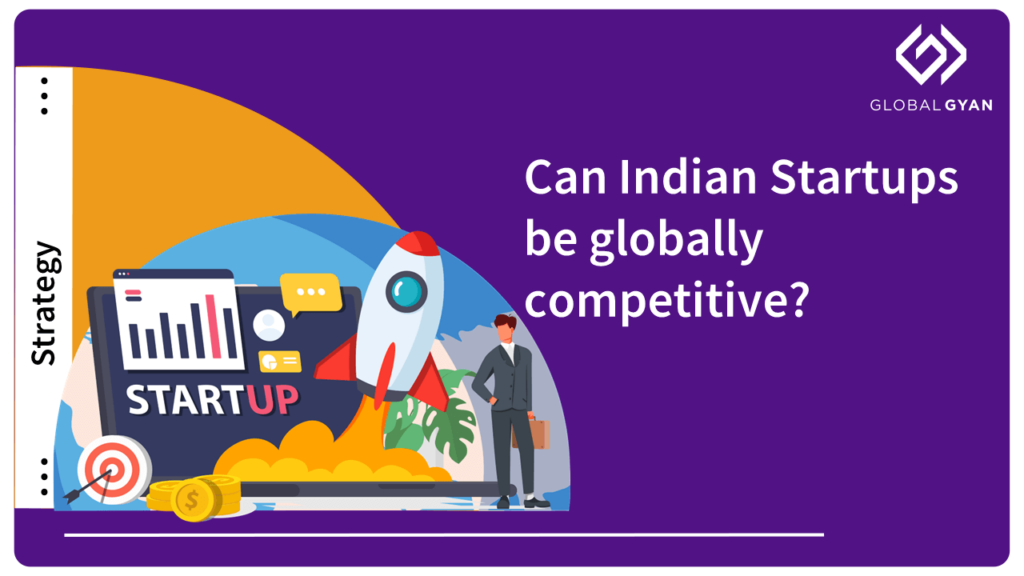Can Indian Startups be Globally Competitive?


While India has banned several Chinese apps, including the highly popular TikTok, it has raised an interesting debate on why Indian apps (and startups) have not achieved the global success that Chinese (and, of course, US) apps have.
A recent article has a detailed take on the Indian app challenge and with a Lord of the Rings reference, it is a must-read. But the larger question remains. Why are very few Indian companies global leaders in their domains and in particular, why is it the case even when it comes to innovation sectors that startups participate in?
In 2008, I wrote about the Twenty22 target set by late C.K. Prahlad of having at least 30 Indian firms in the Fortune 100. On that parameter, the 2020 list is no different to the one in 2008: not a single entry from India. The issues have not also changed much. Here are three reasons why few Indian startups have achieved global positions.
Domestic Market Constraints
India has a huge market by volume, but for many products, it is a relatively small market by value. Take the telecom industry, for instance. India is one of the largest markets in terms of mobile subscribers and data services. However, its overall size is about $32 Bn, smaller than the No.3 telco in the US, and less than 10% of the market size of the US. On the other hand, the Chinese telecom market is over $400 Bn.
For such a small market, India is generally highly fragmented in several categories, with lots of small/mid-size players competing in various regions and niches. Even the telecom market, which is all about economies of scale, had 8-10 players vying for shares till it became financially unbearable for them.
Ideally, the small market size should be prompting Indian businesses and entrepreneurs to look at other geographies to make up for the lack of revenue here. And that’s exactly the reason for many Indian startups pursuing cross-border M&A during the mid to late 2000s.
Limited Access to Risk Capital
Pursuing risky ventures outside one’s home requires not only huge amounts of capital but also highly patient and low-cost capital. Indian firms just don’t have access to such money. When the Tatas, Birlas and others acquired overseas companies, it was mostly with recourse to the parents’ balance sheets.
The Indian government, unlike its Chinese counterpart, never encouraged its firms to go overseas. In fact, it was frowned upon, as a potential flight of capital. Just look at how many of India’s largest firms are family/promoter-owned, and what happens if any of their firms go bankrupt. It’s personal liability all the way.
In the startup space, VC firms have invested billions but most of it has been for copy-cat ideas. Tap the Indian market with a model that is proven elsewhere. It is probably a chicken-and-egg problem… you need the entrepreneurs and the investors to be co-located. Those who are in Bangalore, Gurgaon and elsewhere – why would they build or invest in an app for global market risk when they can replicate models that have succeeded elsewhere (btw, I am not underestimating the risk involved even with that…). Until the Indian entrepreneurship network achieves the size and risk-taking profile that you see in Silicon Valley, we will not see many global apps being made in India.
Cultural Influence of Imperialism
Why are US-made apps so successful in India or elsewhere? Because we can connect with them. Language is not an issue (for those who follow English). Many Indians are culturally familiar with the American lifestyle, due to the influence of movies, TV shows and products. Perhaps we have been, over the years, tuned to accept and adopt external cultural influences, even if they are being returned to us. Many of our elite and investors would rather learn yoga or mindfulness from an American ‘guru’ rather than a home-grown one.
On the other hand, China has built its influence through economic imperialism. It has undoubtedly funded or subsidised its businesses to become globally present and prevalent.
This is not to say that some Indian solutions to huge problems are not globally applicable. Aadhar and everything that has been done in terms of digital payments over the past few years is remarkable. But these are not B2C apps that spread virally (except perhaps Paytm) and are dependent on government and financial regulatory norms, so not easy to export.
In conclusion, I believe the real challenge for Indian startup entrepreneurs is to solve the domestic market problems, even if it is with local offerings that are not globally scalable. When they achieve Indian leadership, then they should evaluate if there is any value in entering other markets. The ADDING Value framework by Pankaj Ghemawat would be an interesting test to apply to the overseas expansion of Indian startups, Ola, OYO and Zomato. That’s for another day!


